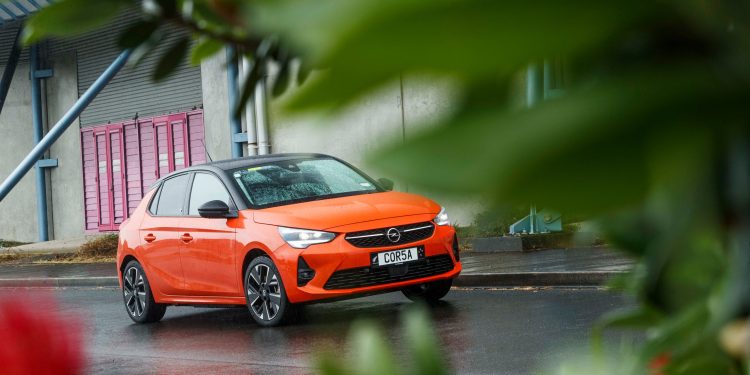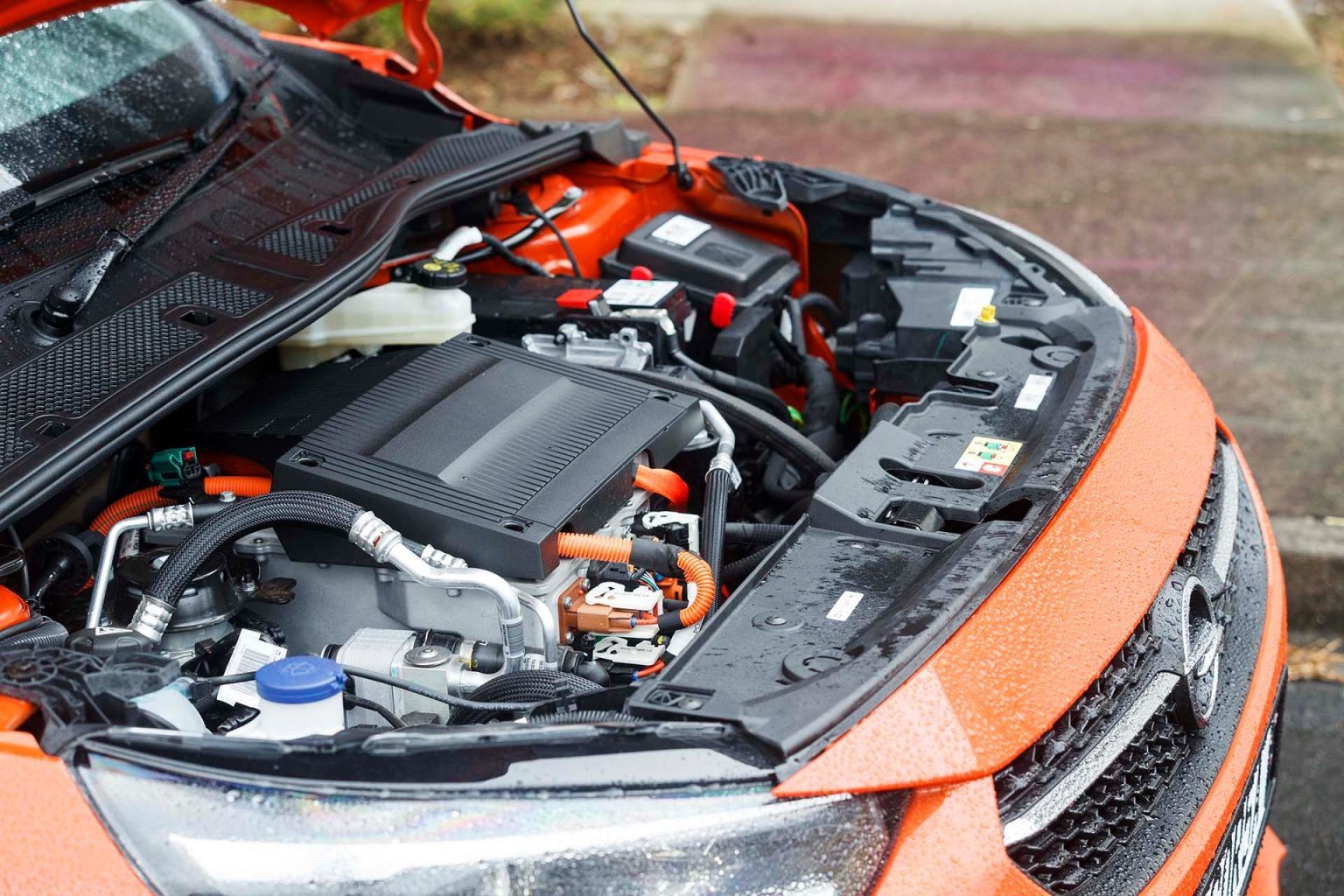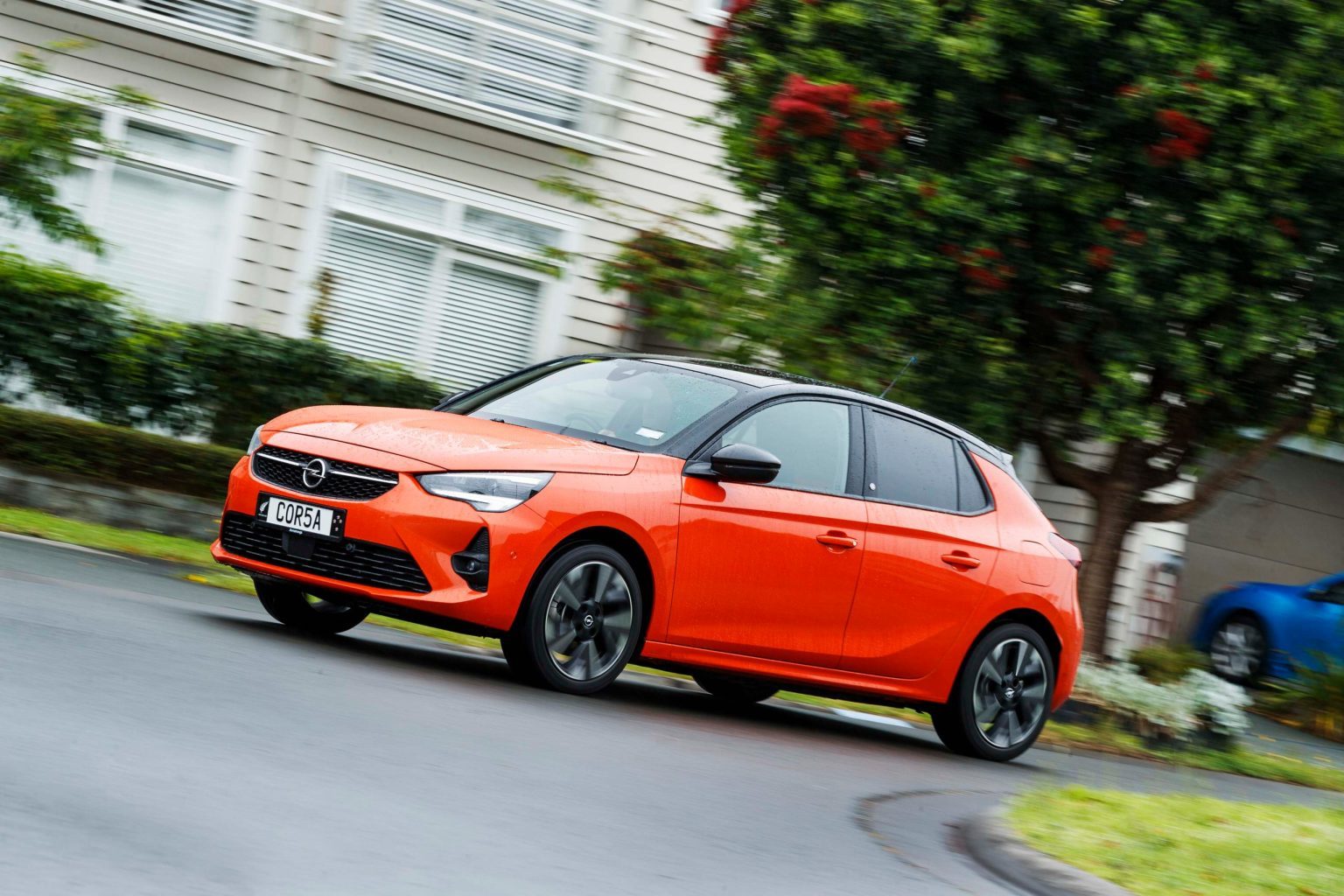2023 Opel Corsa-e SRi review
As you’re probably aware, corsa means runner or racer in French and Italian. Is Opel’s Corsa-e appropriately named?

Corsa means runner or racer in French and Italian. Is Opel’s Corsa-e appropriately named
In recent news, Stellantis which owns Opel, said it cannot make ‘affordable’ EVs in Europe, and hinted at shifting production to India to help reduce costs. The reason we mention this is that the Corsa-e costs $59,990 before ORCs. After the EV $8625 rebate, that still means $51,365 before on roads for a small hatchback with a 50kWh battery pack and theoretical range of 383km. It’s hardly what you’d call affordable but is still one of NZ’s most attainable electric cars.
As a counterpoint, you can purchase Corsa with the exact same specification but powered with a 1.2-litre IL3 engine for $36,990. And there’s a $2439 rebate because of its WLTP-rated combined fuel figure of 5.2L/100km (120g/km), making it $34,551 before on roads. That’s an almost $17k difference for the privilege of never having to front up at a servo ever again.
On the other hand, you have range of around 850km for the petrol car and a refill time of 5min. For the EV, you’re looking optimally at 383km of predominantly stop and go town running, and somewhat less if you’re doing 100km/h for the entirety of the charge (250km or so). After a run around our intermediate drive loop, we were left with 30 per cent charge (86km to empty) and a recharge time on the supplied three-pin charger of 16 hours. The long term trip data indicated consumption of 16kWh/100km (claim 15.2), for a theoretical real world range of 312km, which is probably about right for a mix of urban and motorway running.
One other difference? The EV is a bit quicker, if that means a whole lot to you but only by half a second to 100km/h.
So you can kind of see where Stellantis boss Carlos Tavares is coming from. Only he says that at best an affordable EV built in India is at least five to six years away. And even then there’s no guarantee that such vehicles will be able to compete on price with Chinese-built EVs. And this is an issue that just about every legacy car maker is struggling with; turning a profit in the brave new electric world isn’t as easy as it used to be in the ICE age.
Opel is highlighting its German design chops.
On the other hand, Opel doesn’t want to be necessarily ‘affordable’; the company is highlighting its German design chops, even if product is being made over the border in the same factory where PSA builds its EVs.
In the case of Corsa-e you see here, the specification level is high.
In the case of Corsa-e you see here, the specification level is high. Attractive features include matrix LED headlights, fully digital instrumentation, self locking and unlocking thanks to the proximity key, and adaptive cruise with lane keeping and stop and go, meaning semi-autonomous driving on the motorway. There’s also rear window tints, heated sports seats and steering wheel, road sign recognition, panoramic camera (but not sunroof; that’s an extra $1990) and a smart two-tone paint finish. In the case of this particular car, the Power Orange is a launch colour only, and so too Voltaic Blue; others come at a $550 premium. On the downside, my Android phone wouldn’t fit in the obvious area in front of the “gear lever” where mobiles are meant to go, and none of the oddments areas is rubber lined, making them noisy in use.
Practically speaking, the room in the rear is cozy/better for kids, while the 309-1118L of luggage space allowed me to shoehorn my e-bike minus the front wheel into the split folded area in the rear.
So how did we find the Corsa-e compared with the Mokka-e?
So how did we find the Corsa-e compared with the Mokka-e, which share the same 100kW/260Nm powertrain? Well, the Corsa is rather smaller inside but a better drive overall. It doesn’t use as much windmill juice either. And the reason for that would be two-fold; firstly this weighs in at a claimed 1455kg vs 1523kg for the Mokka-e, a 70-odd kilogramme difference. And perhaps there’s a bit of windage in it too, the Corsa riding closer to terra firma. Anyhow, it romped to its claim of 8.1sec with a best of 8.04, 1.3sec ahead of Mokka-e, while the overtake was almost half a second clear of its bigger, taller sib too, at 6.16sec. And finally, Corsa-e stopped 2m ahead of Mokka-e.
More important than the numbers is how the Corsa-e feels; Eco mode you can use both in and out of town, though it’s better suited to the burbs. It’s better sidestepped altogether in the Mokka. There’s a marked lift in performance when selecting Normal in Corsa-e, the default mode and there’s another palpable hike in Sport mode. The Mokka-e never really feels zippy but the Corsa-e does, even out of town.
Where it also steals a march on Mokka-e is the way it goes about charging through corners. The steering feels more natural, with good feedback and weighting, and the Corsa-e turns with vigour, eventually moving into modest understeer that responds to simply lifting off slightly. There’s none of the kickback in lumpy corners we noted in the Mokka-e either. You hear a bit of suspension thump on occasion but likely as not that’s because the Corsa-e is just so darn quiet on the go. Even tyre roar is muted, with few readings in the 70s, the average over the worst surfaces around 71dB. And the ride is accommodating too, firm but never unfair.
On that, as you may be aware the dogs have voted on what vehicles they prefer and it’s EVs all the way. They’re not silly – a quiet vehicle calms the anxiety levels and slows the breathing rate, at least with almost every other dog that isn’t our neurotic beast.
About the only negative effect the electric gubbins have on vehicle operation is at the brake pedal which feels a little weird when the regen B button is in the ‘on’ position, slowing the vehicle for corners. Switch that out and the pedal feel is more natural. It’s quite a convincing stopper then too, the Michelin Primacy 4s helping in this regard.
For around town, the theoretical range is pretty darn good.
If you plan on driving Corsa-e primarily in town, then the theoretical range is pretty darn good for a small EV. You’d probably only have to stick it on the charger perhaps once or twice a week.
Providing you’re okay with a hatch, which clearly some aren’t, then this is a pretty well balanced EV offering, even if it doesn’t quite tick the affordable description just yet. Chances are that this won’t be happening, for quite some time at any rate; the gradual fall in battery production costs hit a hurdle this year and they’re unlikely to start falling again until at least 2024. So in the meantime, this is probably about as affordable as it gets, at least for a European electric offering.
Finally, a facelift is due in 2023 for Corsa where it will not only get the vizor fascia design like the Mokka but also a small uptick in the battery pack to 55kWh which should give it a range in excess of 400km. Expect a bigger 10-inch touchscreen too.
| Model | Opel Corsa-e SRi |
| Price | $59,990 |
| Clean Car Discount | Rebate – $8625 |
| Motor | single, 100kW/260Nm |
| Battery | 50kWh |
| Range | 383km (WLTP) |
| Drivetrain | single-speed auto, FWD |
| Energy Use | 15.2kWh/100km |
| C02 Output | 0g/km |
| 0-100km/h | 8.04sec |
| 80-120km/h | 6.16sec (172m) |
| 100-0km/h | 33.18m |
| Stability systems | ABS, ESP |
| Safety | AEB, ACC, BSM, LDW, RCTA, ALK, AHB |
| Luggage capacity | 309-1118L |
| Tow rating | Not rated to tow |
| Service plan | $999,3 years, 45,000km |
| Warranty | 5yrs, 100,000km |
| ANCAP rating | 5 stars 2019 |
| Weight | 1455kg (claimed) |
This article was originally published on autocar.co.nz
Also consider
.jpg)




 Kyle Cassidy
Kyle Cassidy 